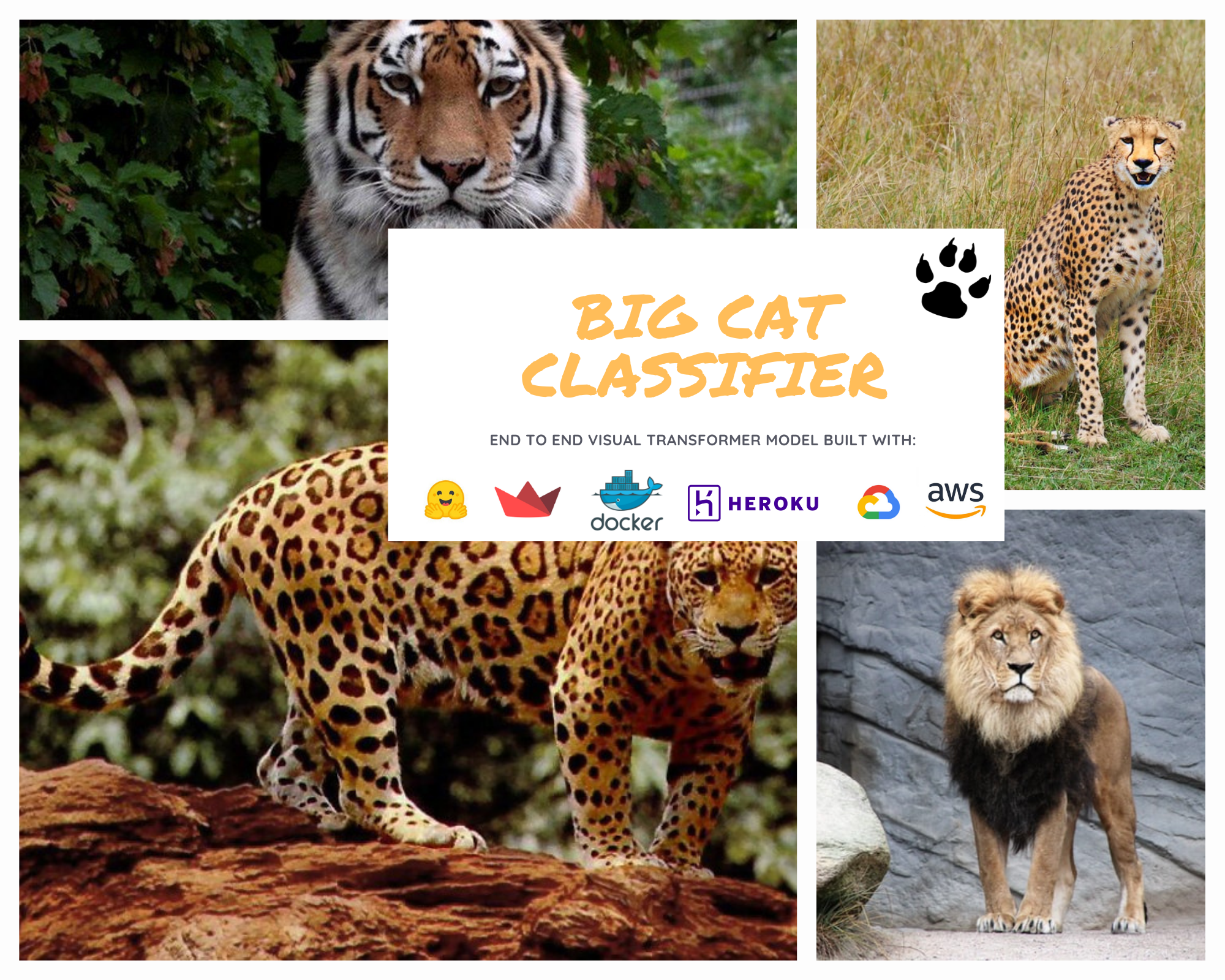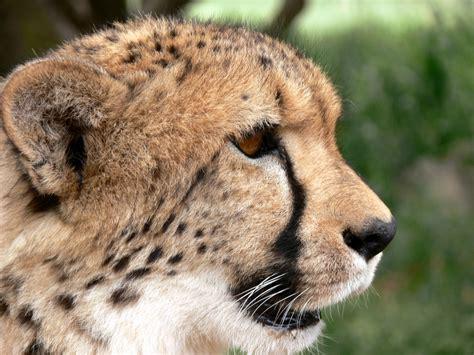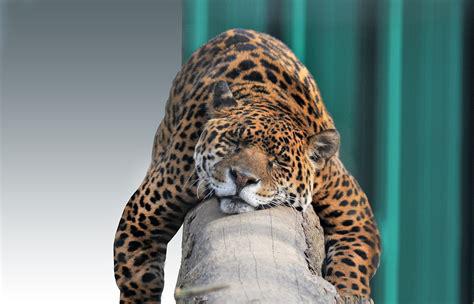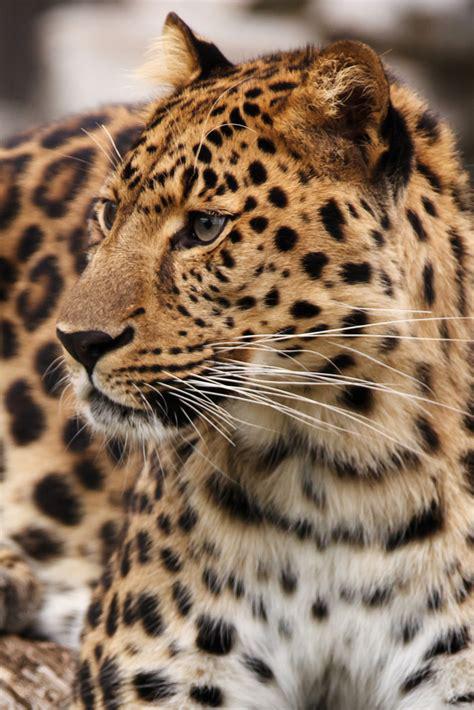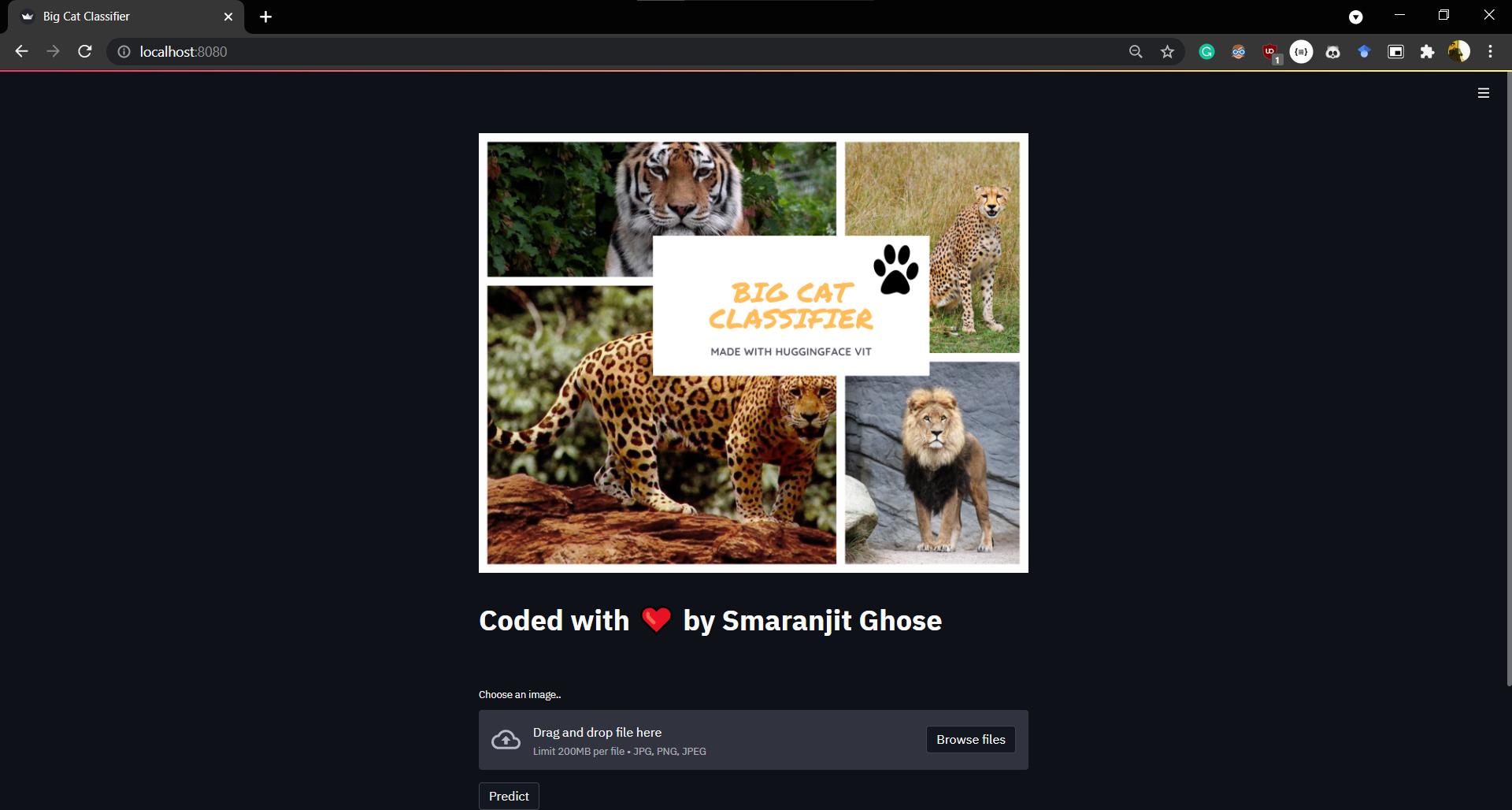metadata
tags:
- image-classification
- pytorch
- huggingpics
metrics:
- accuracy
model-index:
- name: big-cat-classifier
results:
- task:
name: Image Classification
type: image-classification
metrics:
- name: Accuracy
type: accuracy
value: 0.9107142686843872
An image classifier built using Vision Transformers that categories images of the big cats into the following classes:
Note:
- Since jaguars and leopards have similar appearances, the model might confuse the two. These [1] [2] two articles throw some light on the difference between the two species.
- Theoretically the model should be able to accurately identify geographical population variants of each species. However, in practical scenarios this may not be true as during the training phases this was not kept in mind while collecting the dataset.
- For example: images of Bengal Tigers, Siberian Tigers, Indochinese Tigers, and Malayan Tigers should be identified as Tigers
- Lastly, the performance of the model in categorizing certain rare variants in the populations of big cats such as white tigers, snow leopards, or black panther has not been determined exclusively. Although some of the tests performed gave satisfactory results.
Training and Inference
Usage
from PIL import Image
import matplotlib.pyplot as plt
from transformers import ViTFeatureExtractor, ViTForImageClassification
def identify_big_cat(img_path:str)->str:
"""
Function that reads an image of a big cat (belonging to Panthera family) and returns the corresponding species
"""
img = Image.open(img_path)
model_panthera = ViTForImageClassification.from_pretrained("smaranjitghose/big-cat-classifier")
feature_extractor = ViTFeatureExtractor.from_pretrained('smaranjitghose/big-cat-classifier')
inputs = feature_extractor(images=img, return_tensors="pt")
outputs = model_panthera(**inputs)
logits = outputs.logits
predicted_class_idx = logits.argmax(-1).item()
return model_panthera.config.id2label[predicted_class_idx]
our_big_cat = identify_big_cat("path_of_the_image")
print(f"Predicted species: {our_big_cat}" )
Hosted API:
Check it out here
Library App Usage:
- Clone this repository
git clone https://github.com/smaranjitghose/Big_Cat_Classifier.git
- Move inside the cloned repository
cd Big_Cat_Classifier
- Now follow either of following two routes:
A) Without using Docker:
Make sure you have installed the latest stable version Python 3 and added it to PATH
- Install the python dependencies
pip install -r requirements.txt
- Start the streamlit app on local server
streamlit run app.py
B) Using Docker:
Make sure you have installed Docker
- Build the Docker Image
docker build -t smaranjitghose/big-cat-classifier:latest .
- Check if the image is available
docker images
- Create a Docker container from the image and Run it
docker run -t -i -p 8080:8080 --name "big-cat-classifier" smaranjitghose/big-cat-classifier
- Open your browser and visit
localhost:8080
Hosting
- Heroku
- Remove the lines that exposed the particular port in the docker container
- Make sure the startup command is exposed with a variable Port Number
ENTRYPOINT ["streamlit", "run", "app.py", "--server.port=$PORT"]
- Login to Heroku
heroku login -i
- Create a new Heroku app
heroku create
- Login in to Container Registry
heroku container:login
- Build the Docker image and push it to Container Registry
heroku container:push web
- Release the app
heroku container:release web
- Check the hosted version and dashboard
heroku open
